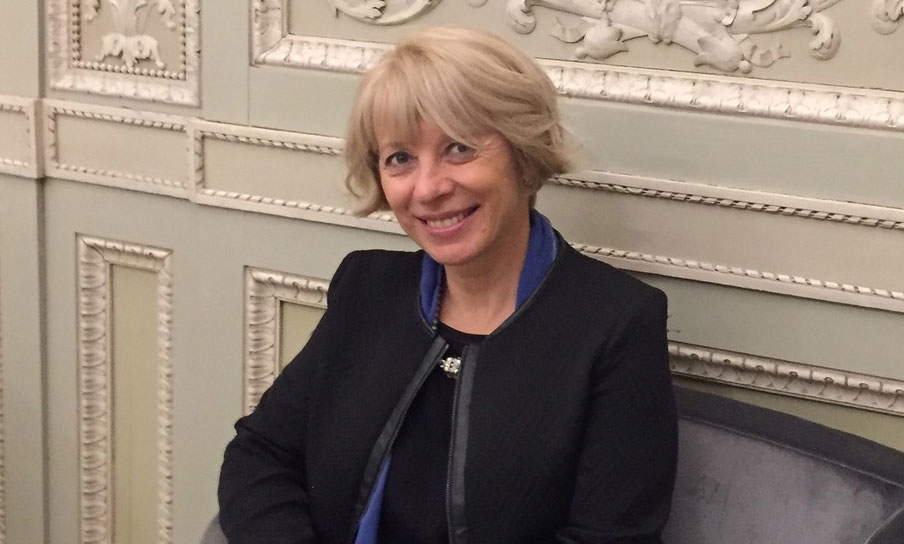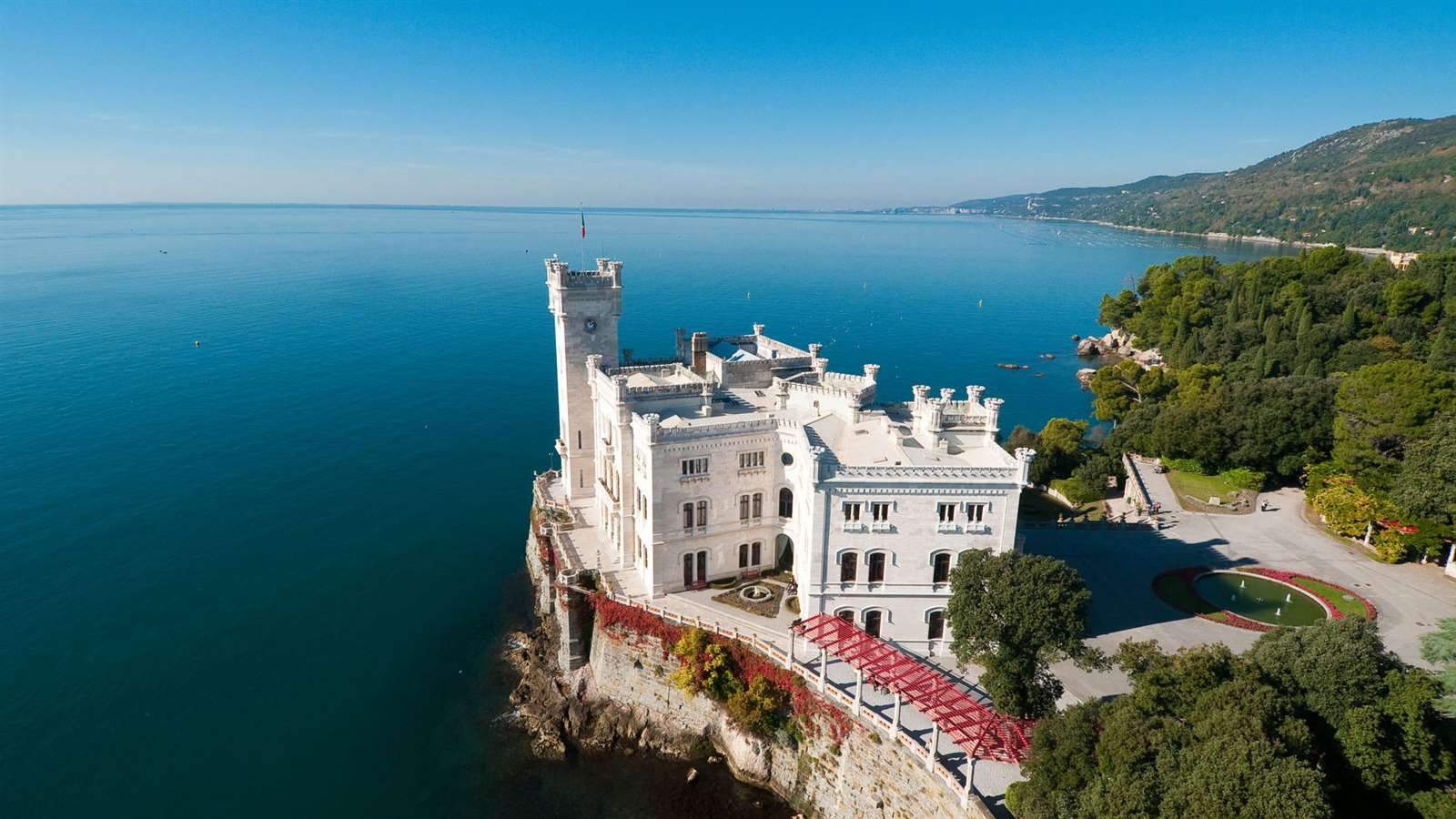"In the crisis, the museum has invested in improving the dialogue with children." Andreina Contessa, director of Miramare Castle, speaks.
How is Trieste’s Miramare Castle Historical Museum and Park dealing with the coronavirus health emergency and how do they plan to work when it ends? During the restrictive measures, investment in digital and activities for children and youth, as well as intensified activity on social media and enhanced content: a museum has a public mission that must continue even behind closed doors. Ending the crisis, a more active dialogue with the local public, renewal of the educational apparatus, enhancement of the collections, few but significant projects. Andreina Contessa, director of the Trieste museum, explains Miramare’s “recipe” in the face of the pandemic. The interview is edited by Ilaria Baratta.
 |
| Andreina Contessa |
IB. As a result of the March 8 DPCM, the Historical Museum and Park of Miramare Castle also had to close to the public, like all museums in Italy. How are you reacting to this decision, in accordance with the restrictive measures of the Covid-19 health emergency?
AC. A very difficult time, in which we cannot help but suffer dellenorme heritage that no one can see, because we are all invited to stay indoors to preserve ourselves and others from this virus. Museums are closed, important exhibitions are suspended waiting for a new opening date, initiatives that have involved investment and enormous work are now in danger of being thwarted. We, too, to safeguard everyone’s health, starting with the employees, work with the museum closed mostly from home, and I do not hide the difficulty of managing and coordinating business continuity by acting remotely in virtual situations that are often neither agile nor smart. We, like everyone else, have invested enormously in communication work at all levels. As so many museums in Italy are doing, we are also telling our stories and seeking public access through the media. I am reflecting enormously on the social as well as cultural role museums have to play today and of possible future developments.
The common thread of your current policy, having increased activity on social channels Facebook, Instagram and Twitter based on a daily planning of new content, including photographs, videos, drawings, and virtual museum tours conducted by yourself, is the idea that culture should not stop and that museums should remain open even if only virtually for the time being. With this in mind, why do you believe that museums and culture more broadly should continue even in difficult times such as the one we are currently experiencing?
If a museum wants to maintain its public, educational and cultural function, it cannot close; it must remain open in the ways that technology and communication allow us today. A museum is a small industrious forge where knowledge experiences are created, education and culture are produced. I am convinced of the inherent value that a museum can bring to everyone’s well-being and life, even in difficult times like these. I believe in the therapeutic power of greenery, art and beauty. In this gloomy time when we are forced to stay away from each other, it is vital to share small experiences of beauty, care and awareness. The contribution that museums are making to overcome this crisis lies in this, but also in making visible the cultural identity in which we grew up and which unites us in creating that effort of widespread responsibility and solidarity to which we are called at this time.
Among your proposed initiatives is Draw Miramare!, the initiative aimed at children that invites the little ones to represent their idea of Miramare in colorful drawings, with the intention of establishing a friendly long-distance conversation with them. You are among the few Italian museum venues that have also thought about children: what prompted this desire?
I had always had the idea of dedicating time and space to children and young people. A project that had actually clashed with the lack of a space in the museum to devote to activities with and for children, with the concessionaire’s decades-long and unchanged management of educational proposals, and with the lack of a real educational office. Nonetheless, in recent years we have begun to rethink initiatives for children and families, through proposals focused on nature themes that would bring together a research trail in the park and one inside the castle collection. Fundamental in this regard has been the collaboration with WWF - Marine Protected Area, housed in a wing of the Stables, and with whom we are also sharing the naturalistic (and soon also the historical-artistic) map of the park and related activities. In this situation of total crisis and reflection, I thought that the opportunity could not be wasted to invest on the at least virtual modernization of the dialogue with the little ones. Draw Miramare! is just the first in a series of initiatives dedicated to children and young people, offering in-depth content on the history of Miramare and its collection, games, audiostories, playful and interactive activities. These include a Memory, Audiostories told to young children, and the series The Treasures of Miramare that explain the collection in language accessible to children. Also being elaborated is a virtual “treasure hunt” in collaboration with WWF - Marine Protected Area for children aged 10 to 14.
The Miramare complex is nestled in a beautiful landscape, with the white castle overlooking the sea and its park. It maintains close ties with its territory and more generally with the Friuli Venezia Giulia Region: hence the decision to ask the local newspaper Il Piccolo for hospitality and to make short videos in which she explores various issues related to the museum and the park. In this situation, but also when the emergency is over, how important is the relationship with the territory and the Region itself?
Since the beginning of the crisis, I have decided to focus on digital for the distant public with a targeted enhancement of content and exchanges on all our social media, but also on print for the public in proximity, with the hospitality asked for and kindly received from the highly read local newspaper Il Piccolo of Trieste, which hosted my appeal to open a window to the museum on its culture page with in-depth interventions on issues related to the collection, but also to the work we are doing at the castle and the park of restoration, preventive conservation, and renewal of the museum narrative and its language. A window into the Miramare known but also the unknown, the back stage of the museum and the varied value of museum curation. Since the beginning of the experience, Il Piccolo has hosted the museum three times a week, and I am grateful for this hospitality. It is also a sign of the role and importance of the museum and the park to the city.
 |
| Trieste, view of the Miramare Castle. Ph. Credit Marco Milani |
According to the latest MiBACT data, the Miramare Museum is among the thirty most visited Italian state museums, ranking 23rd and exceeding 300,000 admissions in 2019: a 10.7 percent increase over 2018. Not taking into account then the free admissions with over 700 thousand visitors a year. Do you foresee a change in visitor flow after the emergency? Have you already thought of a line to hold when exiting this phase?
In addition to the great loss of these months, which for Miramare are normally very busy months, a decrease in future admissions can be expected, partly because the number of trips, travel, and the attraction of public places where groups of people potentially assemble will decrease. We have internalized a set of defensive and preventive attitudes that will be difficult to abandon. We will have to reassure the public by enhancing hygiene and security. I for one have made it mandatory that all dealer-operated audio guidance devices be cleaned/hygienized after each and every use, and I will be watching to ensure that this actually happens. Since there will certainly be a downsizing of the attractiveness of museums, especially to foreigners, the priority reference will go to a near public, for whom the museum represents an important factor of identity identification, and since it is Trieste, also, I hope, to the public of the intermediate beyond the border to the east but also in the direction ofAustria. The dialogue with audiences far and near has never been interrupted, and it will be on this continuity that we will focus in the months to come, even as we move toward a gradual reopening, investing new energy and creativity in creating community loyalty and commitment to the common good. We have to take into account that it will be mainly local and upcoming visitors who will be the audience for the exhibition on Marcello Dudovich and the focus on the Science of Vision that we were supposed to open in early March and are suspended.
In recent weeks the museum’s Atrium of Honor has changed its face, redecorating it-a message of renewal at a time, we might say, of general despondency. Is this a sign that museums need to change for the better in order to follow the course of time?
This renewal should be seen in the context of the museum path revision actions recently initiated, and the new way we are experimenting with Focus on to tell the museum through its objects, enhancing them and studying them from different points of view. This process could not fail to reconsider theAtrium of Honor, which opens and concludes the tour. This room, as was the case in the stately homes of the past, was historically part of the spaces dedicated to the celebration of the lineage of the hosts, as appears in the instructions written by Maximilian for the interior layout of Miramare, and as is consistently attested in the photographic evidence of the time. Underlying this are, as always, study and research, the building blocks of a museum, which we are similarly pursuing on the grounds, where we are working on philologically correct but also sustainable conservation.
After this emergency, what do you think the Italian cultural landscape will be? Will it be able to rise positively from this situation?
The Italian scene will be economically on its knees, but I believe it will be able to take advantage of lenormous richness of its heritage and the potential of energy and creativity that museums are showing, especially the autonomous ones, led by directors who are spending themselves. Cultural reprogramming of activities will also be necessary, taking into account the social distancing that we have all internalized and that will only slowly or perhaps never leave us. In Miramare we will also focus on the park and the possibility of rethinking a renewed educational path. In this long closure, we have taken the opportunity to strengthen and invest on the modernization also digital and virtual of the dialogue with the youngest, who are also our visitors of tomorrow. It is on that that new thinking and new creative energy must be placed. It will exponentially decrease the number of exhibitions offered, the focus should be on a few highly significant projects, the enhancement of collections, and a collaboration between museums that promotes shared (even in costs) and participatory forms of planning would be desirable. I believe that the great crisis and the difficult time we are experiencing should be an opportunity to rethink the role of museums in society in general, but more concretely in the society/community/city/region of reference.
Warning: the translation into English of the original Italian article was created using automatic tools. We undertake to review all articles, but we do not guarantee the total absence of inaccuracies in the translation due to the program. You can find the original by clicking on the ITA button. If you find any mistake,please contact us.




























